Pulpectomy
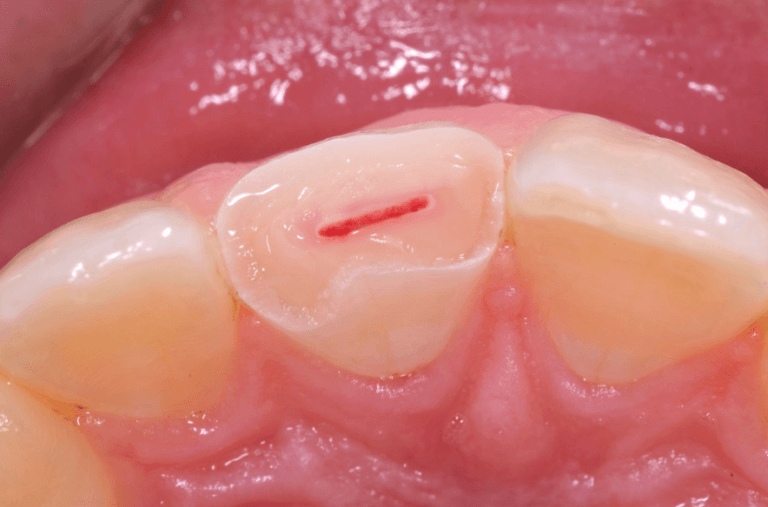
What Is Pulpectomy?
The pulp tissue, located at the center of the tooth, houses nerves and blood vessels, contributing to the tooth’s overall vitality. When this pulp tissue becomes infected with bacteria or is damaged, a procedure like Pulpectomy is necessary. In essence, a Pulpectomy removes all the pulp tissue from the crown and roots of a tooth, replacing it with a temporary sedative material that can be reabsorbed by the body. A pulpectomy can be done alone on a temporary, emergency basis to alleviate pain and halt the spread of infection. It is often done as the first step in the Root Canal Treatment procedure.
Before deciding on whether Pulpectomy are right for you, there are some things you should know:
- Who Needs A Pulpectomy?
- What Are The Indications For Pulpectomy?
- What Are The Contraindications For Pulpectomy?
- What Are The Advantages Of A Pulpectomy?
- What Are The Alternative Treatments If I Do Not Choose Pulpectomy?
- How Much Does Pulpectomy Cost?
- What Are The Steps In The Pulpectomy Procedure?
- Can I Have A Pulpectomy If I Am Pregnant?
- What Are Common Problems with Pulpectomy?
If you have any further questions about Pulpectomy or other dental services offered at Atlas Dental, please contact us.

Free phone consultation
Have questions about Pulpectomy? Schedule a free phone consultation with our Toronto dentist.

5 star google reviews
Our patients love us! See for yourself why more and more people are choosing Atlas Dental for Pulpectomy

Book emergency pulpectomy
Do you think you have cavities and need a Pulpectomy? Book an emergency Pulpectomy online.
Who Needs A Pulpectomy?
Understanding the circumstances that warrant a pulpectomy is crucial for individuals seeking to maintain their dental health. This procedure is typically recommended in cases where the dental pulp, the innermost part of the tooth containing nerves and blood vessels, becomes compromised. Several factors can contribute to the need for a pulpectomy:
- Deep Tooth Decay: When tooth decay extends deep into the pulp, it can cause infection and inflammation. In such cases, a pulpectomy is often recommended to remove the infected pulp and prevent the spread of bacteria.
- Trauma or Injury: Accidents or injuries to the tooth can lead to damage in the pulp. Whether due to a sports injury or a fall, trauma may necessitate a pulpectomy to address internal damage and preserve the tooth.
- Abscess Formation: An abscess, a painful collection of pus, can form at the tooth’s root when the pulp is infected. Pulpectomy is often necessary to drain the abscess, eliminate the infection, and save the tooth.
- Cracked or Fractured Tooth: A tooth with a significant crack or fracture may expose the pulp to bacteria, leading to infection. Pulpectomy becomes essential to address the compromised pulp and salvage the tooth.
Recognizing the signs that may indicate the need for a pulpectomy, such as persistent toothache, swelling, or sensitivity to hot and cold temperatures, is crucial. If you are experiencing any of these symptoms, consulting with a dental professional is paramount to determine the most appropriate course of action and preserve your oral health. If you have further questions about the Pulpectomy treatment, please contact us.
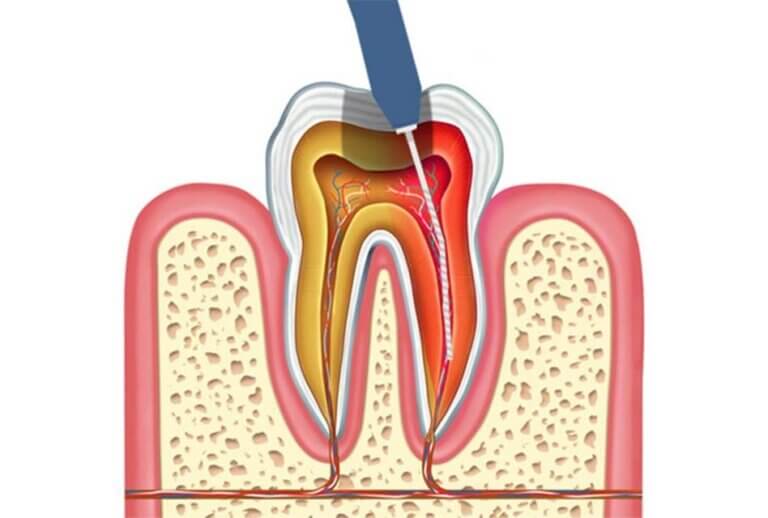
What Are The Indications For Pulpectomy?
Understanding the indications for a pulpectomy is crucial for both patients and dental professionals in making informed decisions about the course of treatment. Here are some common indications that may prompt a dentist to suggest a pulpectomy:
- Severe Toothache: Persistent and intense toothache, especially when chewing or applying pressure, can indicate an issue deep within the tooth. If the pain is associated with inflammation or infection of the pulp, a pulpectomy may be advised.
- Prolonged Sensitivity: Heightened sensitivity to hot or cold temperatures that lingers even after the stimulus is removed could be a sign of pulp-related problems. If conventional treatments for tooth sensitivity prove ineffective, a pulpectomy might be considered.
- Swelling or Abscess: Swelling in the gums or the development of an abscess (a painful, pus-filled sac) near the affected tooth often signals an infection reaching the pulp. A pulpectomy becomes necessary to eliminate the infection and prevent its spread.
- Discoloration of the Tooth: A tooth that undergoes a change in color, turning gray or dark yellow, may indicate damage or infection in the pulp. Addressing the issue through a pulpectomy can restore the tooth’s appearance and health.
- Cracked or Fractured Tooth: A significant crack or fracture in a tooth may expose the pulp to bacteria, leading to infection. Pulpectomy is often necessary to treat the compromised pulp and save the tooth.
Early intervention through a pulpectomy can not only alleviate pain and discomfort but also preserve the affected tooth, contributing to overall oral health. If you have further questions about the Pulpectomy treatment, please contact us.
What Are The Contraindications For Pulpectomy?
While pulpectomy is a valuable dental procedure for addressing specific dental issues, there are situations where it may not be the recommended course of action. Understanding the contraindications for pulpectomy is essential for both dental professionals and patients to ensure that alternative treatments are explored when necessary. Here are some common contraindications for pulpectomy:
- Extensive Pulp Necrosis: If the pulp tissue has already undergone extensive necrosis (cell death), a pulpectomy may not be effective. In such cases, alternative treatments, such as root canal therapy, may be considered to address the damaged or infected pulp.
- Advanced Gum Disease (Periodontitis): If a tooth is affected by advanced periodontitis, where the supporting structures like gums and bone are severely compromised, a pulpectomy may not be the most appropriate solution. Addressing the underlying gum disease and stabilizing the oral environment may be prioritized.
- Irreversible Pulpitis: Irreversible pulpitis refers to inflammation of the pulp that cannot be resolved, typically due to advanced decay or trauma. In cases of irreversible pulpitis, a pulpectomy may not be sufficient, and more extensive treatments like root canal therapy may be necessary.
- Extensive Tooth Decay Beyond Repair: In cases where tooth decay has progressed extensively, compromising the overall structure of the tooth, a pulpectomy may not be effective. Extraction of the tooth and consideration of restorative options like dental implants or bridges might be more suitable.
- Systemic Health Issues: Certain systemic health conditions, such as compromised immune function or bleeding disorders, may pose contraindications for pulpectomy. In such cases, the overall health of the patient must be taken into account, and alternative treatment options explored.
- Previously Root Canal Treated Tooth: A tooth that has undergone a previous root canal treatment is not eligible for pulpectomy. The complexities arising from residual materials, compromised tooth structure, or potential reinfection can make the procedure less effective or riskier. In such cases, root canal retreatment may be the preferred treatment option.
- Root Resorption: Root resorption is a pathological process where the body breaks down the root structure of a tooth from the inside (internal root resorption) or from the outside (external root resorption). If significant root resorption is present, attempting a pulpectomy may be impractical, as the tooth’s structural integrity may be compromised and can hinder the successful removal of infected pulp tissue. Tooth removal and replacement options such as dental implants may be the preferred treatment option.
It’s important to note that the decision to perform a pulpectomy or explore alternative treatments depends on a thorough assessment by a dental professional. Patients should communicate openly with their dentists, providing information about their overall health, any pre-existing conditions, and their ability to comply with post-operative care. If you have further questions about the Pulpectomy treatment, please contact us.
What Are The Advantages Of A Pulpectomy?
A pulpectomy is a dental procedure that offers several advantages, making it a valuable intervention for preserving a tooth’s health and functionality. Understanding these advantages can help patients appreciate the significance of this procedure in maintaining their overall oral well-being. Here are some key advantages of pulpectomy:
- Preservation of Natural Tooth: One of the primary benefits of a pulpectomy is the preservation of the natural tooth. By removing the infected or damaged pulp and filling the space with an inert material, the tooth’s structure is maintained, contributing to overall oral function and aesthetics.
- Pain Relief: Pulpectomy is often recommended to alleviate persistent toothache associated with pulp inflammation or infection. By removing the affected pulp, the source of pain is eliminated, providing relief to the patient.
- Prevention of Spread of Infection: When the dental pulp is infected, there is a risk of the infection spreading to surrounding tissues, leading to more extensive dental issues. Pulpectomy effectively halts the spread of infection, preventing complications and preserving the health of adjacent teeth and gums.
- Avoidance of Tooth Loss: In many cases, a successful pulpectomy can prevent the need for tooth extraction. Preserving natural teeth is essential for maintaining proper dental alignment, preventing issues like shifting of adjacent teeth, and preserving the integrity of the jawbone. The procedure allows patients to enjoy their favorite foods without discomfort and promotes overall well-being.
Understanding these advantages emphasizes the importance of considering a pulpectomy as a viable option when faced with specific dental issues. However, it’s crucial for patients to consult with their dentist to determine the most suitable course of action based on their individual circumstances. If you have further questions about the Pulpectomy treatment, please contact us.
What Are The Alternative Treatments If I Do Not Choose Pulpectomy?
When considering dental treatments, it’s important to be aware of alternative options, especially if pulpectomy may not be the most suitable choice for your specific situation. Depending on the nature and extent of the dental issue, your dentist may recommend one of the following alternative treatments:
- Root Canal Treatment (RCT): Root canal treatment is a procedure where the dentist not only removes the damaged or infected pulp tissue from the tooth’s pulp chamber and root canals, they will also clean, shape and permanently seal the canals to prevent the entry of bacteria, thus saving the natural tooth. After the root canal treatment, the tooth is typically restored with a filling or crown.
- Root Canal Retreatment: If a previous root canal treatment has not been successful or if complications arise, a retreatment of the root canal may be suggested. This involves reopening the tooth, removing existing filling material, and addressing any remaining issues in the pulp chamber.
- Direct Pulp Capping: Direct pulp capping is a conservative alternative in cases where the pulp is minimally affected. This procedure involves applying a medicament directly to the exposed or nearly exposed pulp to stimulate healing and prevent further damage.
- Indirect Pulp Capping: This is a procedure when the pulp is not directly exposed but is at risk due to deep dental decay. The dentist removes the decayed tissue, leaving a thin layer of affected dentin above the dental pulp. A medicated material is placed over the remaining dentin to stimulate healing and protect the pulp. A restoration, like a filling or crown, is then applied to seal the tooth.
- Pulpotomy: A pulpotomy is a less extensive procedure compared to pulpectomy and is often performed on primary (baby) teeth. It involves the removal of the infected or inflamed pulp from the crown portion of the tooth, while the root remains intact.
- Tooth Extraction: In cases where the tooth is severely damaged, decayed beyond repair, or poses a risk to surrounding teeth and tissues, tooth extraction may be recommended. Following extraction, replacement options such as dental implants, bridges, or dentures can be considered to restore oral function and aesthetics.
Your dentist will carefully evaluate your oral health, consider your preferences, and discuss the pros and cons of each alternative treatment option. It’s essential to engage in open communication with your dental professional to make an informed decision that aligns with your overall oral health goals. If you have further questions about the Pulpectomy treatment, please contact us.
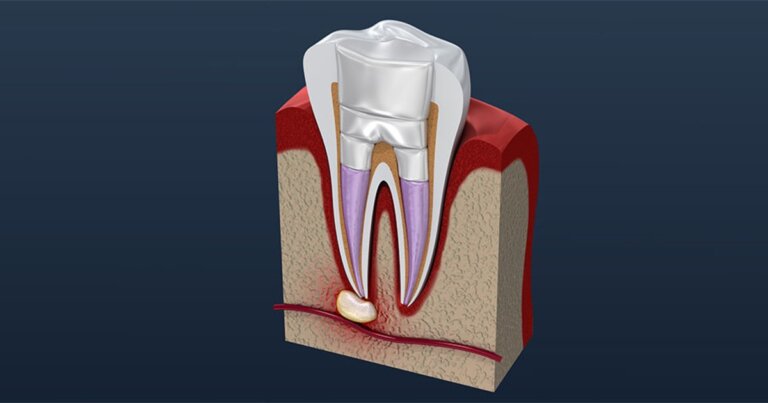
Cost of Pulpectomy
The cost of Pulpectomy treatment depends on whether the tooth is a primary/baby tooth or a permanent/adult tooth, as well as the number of canals inside the tooth. Therefore, the cost of a Pulpectomy can range between $176-319. The codes relevant to pulpectomy in the Ontario Dental Association’s Suggested Fee Guide appear as follows:
Pulpectomy, Permanent Teeth/Retained Primary Teeth
- 32311 – One canal: $176
- 32312 – Two canals: $183
- 32313 – Three canals: $272
- 32314 – Four canals or more: $319
Pulpectomy, Primary Teeth
- 32321 – Anterior Tooth: $176
- 32322 – Posterior Tooth: $180
Pulpectomies are considered a basic service under all dental insurance plans and should be covered to your maximum insurable limit, but be sure to find out from your dental insurance plan provider how much you are eligible for before going ahead with dental treatment. Our fees are consistent with the ODA Fee Guide.
For patients without dental insurance, Atlas Dental is pleased to offer dental financing through Dentalcard. Affordable payment plans start at 7.95% for terms of 6 months to 6 years. To learn more about Dentalcard dental treatment financing, follow this link.
What Are The Steps In The Pulpectomy Procedure?
The pulpectomy procedure is a systematic and carefully executed dental intervention aimed at addressing issues within the pulp chamber of a tooth. While specific steps may vary based on individual cases and the tooth involved, here is a general overview of the typical steps in a pulpectomy procedure:
- Preparation and Anesthesia: Before beginning the pulpectomy, the dentist will administer local anesthesia to ensure that the patient is comfortable and pain-free during the procedure. Once the area is numb, the dentist will isolate the tooth using a rubber dam, a protective sheet that prevents saliva and other contaminants from entering the treatment area.
- Access Opening: The dentist creates an opening in the crown of the tooth to access the pulp chamber. This step involves removing any existing dental fillings or decayed portions to reach the infected or damaged pulp.
- Pulp Chamber Exploration: With access to the pulp chamber, the dentist carefully removes the diseased or inflamed pulp tissue. Specialized instruments are used to clean and shape the root canals to ensure thorough removal of bacteria and debris.
- Irrigation and Disinfection: The root canals are irrigated with a sterile solution to flush out remaining pulp remnants, bacteria, and debris. Disinfecting agents may be applied to ensure that the canals are free from infection.
- Medication Placement: A medication such as calcium hydroxide, ferric sulfate or formocresol may be placed within the cleaned root canals to further disinfect the area and promote healing. This is particularly common when there is evidence of infection or inflammation.
- Temporary Filling: After the root canals are thoroughly cleaned and treated, a temporary filling is placed to seal the access opening. This temporary filling provides protection to the tooth between appointments and allows time for any residual infection to clear.
- Follow-Up Appointments: In a subsequent appointment, the dentist will assess the tooth’s response to the initial treatment, ensuring that the infection has been successfully eliminated. Complete root canal treatment may be recommended to permanently clean and seal the canals of the tooth. The dentist may later recommend a permanent restoration such as a dental filling or crown, which not only reinforces the tooth’s strength but also enhances its aesthetic appeal.
Throughout the pulpectomy procedure, dentists prioritize patient comfort and safety. It’s common for patients to experience mild discomfort or sensitivity after the procedure, which can usually be managed with over-the-counter pain medications. Understanding the steps involved in a pulpectomy can help alleviate concerns and empower patients to actively participate in their oral health care. If you have further questions about the Pulpectomy treatment, please contact us.
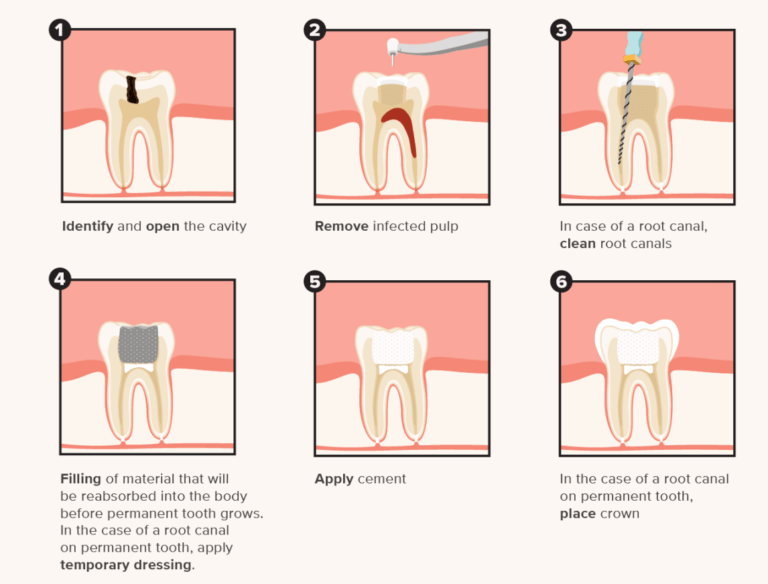
Can I Have A Pulpectomy If I Am Pregnant?
The question of whether one can undergo a pulpectomy while pregnant is a valid concern, considering the importance of maintaining both maternal and fetal health. Dental care during pregnancy is a topic of careful consideration, and in many cases, undergoing a pulpectomy may be deemed safe. However, certain precautions and considerations should be taken into account:
- Timing of the Procedure: The second trimester (weeks 14-26) is generally considered the safest time for dental procedures during pregnancy. At this stage, the risk of potential harm to the developing fetus is minimized, and the patient is likely to be more comfortable during the procedure.
- Local Anesthesia Safety: The use of local anesthesia, which is common in dental procedures, is generally considered safe during pregnancy. The amount of anesthesia administered is carefully controlled to ensure minimal impact on both the mother and the developing baby.
- Radiation Exposure: Dental X-rays may be necessary for proper diagnosis and treatment planning in a pulpectomy. The use of lead aprons and thyroid collars, as well as the targeting of X-rays only to the necessary areas, helps minimize radiation exposure. In many cases, X-rays are deferred or limited during pregnancy, especially in the first trimester.
- Medications Used: The medications used during a pulpectomy, including antibiotics and pain relievers, are chosen with caution during pregnancy. The dentist will consider the potential impact on the developing fetus and choose medications that are deemed safe during pregnancy.
- Communication with Healthcare Providers: It is crucial for pregnant individuals to inform both their dentist and obstetrician about their pregnancy and any related health concerns. This open communication ensures that both healthcare providers can collaborate to make informed decisions about the timing and safety of the pulpectomy.
- Postoperative Care: Following a pulpectomy, pregnant individuals should adhere to postoperative care instructions provided by the dentist. This may include recommendations for pain management, oral hygiene practices, and any necessary follow-up appointments.
While pulpectomy can be performed during pregnancy with proper precautions, the decision should be made on a case-by-case basis, taking into account the individual’s overall health, the urgency of the dental issue, and the stage of pregnancy. In some cases, temporary measures may be taken to address immediate concerns, with the pulpectomy scheduled for a more suitable time. If you have further questions about the Pulpectomy treatment, please contact us.
What Are Common Problems With Pulpectomy?
While pulpectomy is generally a reliable and effective dental procedure, like any medical intervention, it may be associated with certain challenges or complications. Being aware of potential problems can help patients recognize signs of issues and seek timely intervention. Here are some common problems that may arise with pulpectomy:
- Persistent Pain: While some discomfort is normal after a pulpectomy, persistent or increasing pain may indicate a problem. This could be due to incomplete removal of infected tissue, a complication in the healing process, or the development of a new issue.
- Swelling or Abscess Formation: Swelling in the gums or the formation of an abscess near the treated tooth may suggest ongoing infection or complications. Swelling can be a sign that the infection has not been fully resolved or that there is an issue with the tooth’s healing.
- Discoloration of the Treated Tooth: If the tooth that underwent a pulpectomy begins to change color, turning gray or dark yellow, it could indicate problems with the pulp or the blood supply to the tooth. Discoloration may suggest ongoing issues that require further evaluation.
- Root Canal Complications: Complications related to the root canal, such as instrument fracture or perforation, may occur during the pulpectomy procedure. While these are rare, they can impact the success of the treatment and may require additional intervention.
Patients who experience any of these problems or notice changes in the treated tooth should contact their dentist promptly for a thorough evaluation. Timely intervention can help address emerging issues, prevent complications, and contribute to the long-term success of the pulpectomy. If you have further questions about the Pulpectomy treatment, please contact us.
We also think you’ll like…
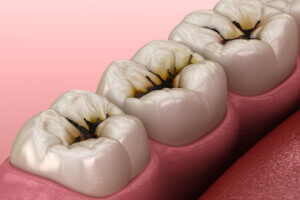
Irreversible Pulpitis
Irreversible Pulpitis What Is Irreversible Pulpitis? If you’ve ever experienced a sudden, sharp, and persistent toothache, you may be experiencing “Irreversible Pulpitis.” This dental condition,

Dental Abscess
Dental Abscess What Is A Dental Abscess? A Dental Abscess often appears as a painful swelling in the gums, cheek, or area near an affected
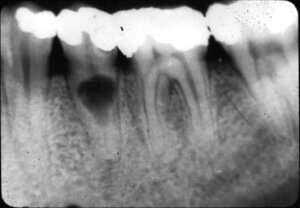
Internal Root Resorption
Internal Root Resorption What Is Internal Root Resorption? Internal root resorption occurs when there is an unusual breakdown of the tooth’s internal structure, particularly within
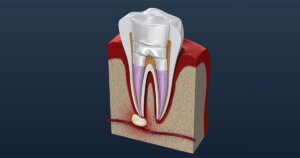
Root Canal Treatment
Root Canal Treatment What Is Root Canal Treatment? If you’ve been told that you need a Root Canal Treatment, you might be feeling a bit
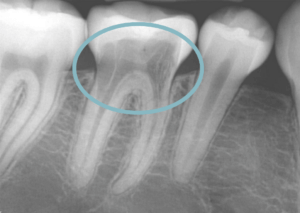
External Root Resorption
External Root Resorption What Is External Root Resorption? External root resorption occurs when the body’s own immune system attacks and breaks down the outer root

Abscess Drainage
Abscess Drainage What Is Abscess Drainage? A Dental Abscess often appears as a painful swelling in the gums, cheek, or area near an affected tooth.

